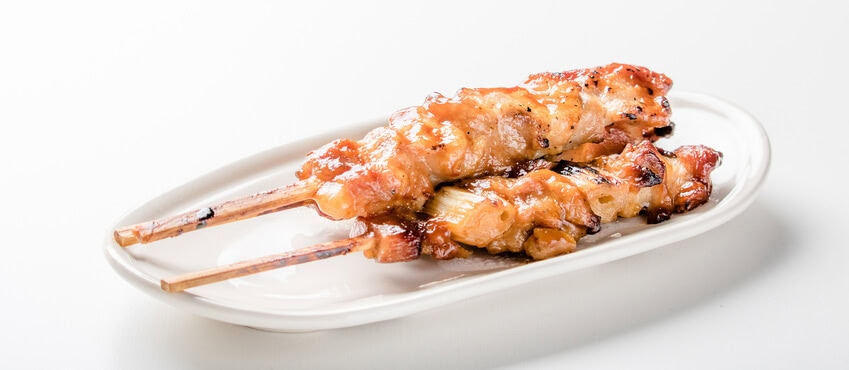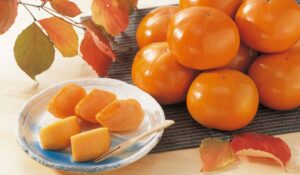Japanese cuisine is renowned around the world – from the savory depths of ramen to the delicate artistry of sushi. But beyond the popular favorites, there’s a whole lot more to explore in the world of Japanese food. One dish that really deserves more recognition is soba, the humble buckwheat noodle that has a rich history and passionate following in Japan.
In this article, we’ll take a closer look at the art of soba-making – tracing its origins, exploring the diverse regional styles, and even introducing a few top-notch soba restaurants you can visit. Whether you’re a soba novice or already a convert, hopefully you’ll come away with a newfound appreciation for this versatile Japanese staple.
What is Soba?
Soba, a beloved staple in Japanese cuisine, consists of noodles crafted from buckwheat flour. Though enjoyed nationwide, the official definition mandates a blend of at least 30% buckwheat flour and no more than 70% wheat flour.
Soba Day: While Toshikoshi Soba (year-crossing soba) on New Year’s Eve is a well-known tradition, every month’s end is also designated as “Soba Day.” This custom dates back to the Edo period. Merchants then favored soba at month’s end, believing its long, slender shape symbolized prosperity and good fortune for their businesses.
History

Soba’s history in Japan is extensive, with evidence of buckwheat cultivation dating back to the Jomon period (circa 10,000 BC). The exact origin of buckwheat is debated, but the prevailing theory suggests it was introduced from China via Kyushu.
Today, we associate soba with noodles, but this wasn’t always the case. In earlier times, people consumed buckwheat as sobagaki (a thick paste) or sobamochi (buckwheat dumplings). The modern noodle form, called “soba-giri,” gained popularity in Edo, eventually outshining even udon in popularity.
Types of soba flour
There are many different types of buckwheat flour in Japan.
The main types of flour in Japan are:
- Ichiban-ko (Sarashina-ko) – The highest quality flour made from the endosperm of the soba grain. It has the best flavor.
- Niban-ko (Chuusoumen-ko) – The second-highest quality flour, made from the next part of the soba grain after the ichiban-ko. It has good flavor but is not as high quality as ichiban-ko.
- Sanban-ko – The third-highest quality flour, made from the next part of the grain. It has a coarser texture and weaker flavor.
- Suriome – The lowest quality flour, made from the outer parts of the grain. It has a fine texture but weaker flavor.
- Hikigurumi – Made by grinding the whole soba grain together. It has a coarse texture and strong, rich flavor.
The variety of it also affects its characteristics, with different regional varieties such as Kitawasetarai, Reranokaoiri, and Botansoba having unique aromas, textures, and flavors (Soba Foundation, 2022).
The production methods also vary, including handmade, machine-made, dried, and fresh noodles, each with its own unique characteristics (Soba Information Center, 2023).
Understanding the different types of soba flour and production methods can help to appreciate the diversity and nuances of Japanese sobanoodles.
Soba Varieties
Wanko Soba

Unique to Morioka and Hanamaki in Iwate Prefecture, Wanko Soba features a distinctive serving style. You receive continuous bite-sized portions in small bowls, stacking the empties as you eat. This tradition comes from “soba-furu-mai” (soba hospitality), where locals generously served soba to welcome guests.
Click here to read more about Wanko Soba!
Togakushi Soba

Originating from Nagano’s Togakushi district, this soba has deep ties to the area’s history of mountain asceticism. It uses “hiki-gurumi” flour (whole buckwheat, including the husk) and features a unique “bocchi-mori” serving style with small noodle bundles arranged on a bamboo tray. Enjoy it with spicy daikon radish, local mountain vegetable tempura, and pickles.
Find your favourite Togakushi Soba restaurant here.
Izumo Soba

This variety hails from Shimane’s Izumo region. It also uses “hiki-gurumi” flour, creating a nutritious and flavorful noodle. Izumo Soba comes in two styles: cold “wariko soba” in a three-tiered stack of bowls, and hot “kama-age soba” served with hot dipping sauce.
How is Izumo Soba made? Find out here!
How to make Soba?
Ingredients
| Ingredients | Quantity | Notes |
| Yama Shiroya Soba Flour (whole buckwheat) | 1 bag (200g) | 100% Hokkaido-grown buckwheat |
| Strong flour (bread flour) | 50g | |
| Water | 120cc | |
| Additional buckwheat flour | 200g | For dusting |
| Soba dipping sauce | To taste | |
| Yama Shiroya Dried Kujo Green Onions | To taste | From Kyoto |
Instructions

Thoroughly mix the soba flour and strong flour.
Create a well in the center of the flour mixture.
Carefully add water little by little into the well, avoiding spilling onto the bowl.
Using a circular motion, quickly mix from the outside towards the center. Ensure there are no lumps or dry flour patches, mixing until uniform.
When the mixture forms into small balls about 2-3 cm in diameter, gently press them together into one large ball.
Knead the dough for about 5-10 minutes until it becomes smooth and glossy.
Dust a cutting board with additional buckwheat flour and place the dough on it.
Gently press the dough into a circular shape.
Roll out the dough to a thickness of about 5mm.
Sprinkle the top surface of the dough with more buckwheat flour.
Fold the dough into thirds.
Cut the dough into noodles of your desired thickness. The original recipe suggests thin noodles.
Bring a large pot of water to a rolling boil. Add the noodles in small batches, ensuring they don’t stick together. Cook for about 50 seconds over high heat.
Rinse the cooked noodles in cold water and drain well.
Arrange the noodles in bowls, add your preferred soba dipping sauce, and garnish with dried Kujo green onions or other toppings.
Recommended Restaurants
Tamawarai

If you’re looking for some of the best soba in Tokyo, head to Tamawarai in the Jingumae neighborhood. This local favorite has earned a spot on the prestigious “hyakumeiten” (top 100 restaurants) list for five years running – and it’s easy to see why. The owner takes pride in every step of the soba-making process, personally shelling, grinding, and milling all the buckwheat flour used. The result is noodles with an incredibly robust, flavorful character.
Beyond the classic soba dishes, Tamasho offers some real standouts. Don’t miss the “natto soba” made with aomame (green soybeans) from Aomori, or the “herring soba” that’s slowly simmered for 6 days. And the small plates, like the miso-marinated “grilled shrimp” and seasonal vegetable tempura, are the perfect accompaniment to a glass of sake.
Miyamoto

If you find yourself in Shimada City, Shizuoka, be sure to stop by the longstanding Miyamoto. This place has been upholding the traditions of Edomae-style soba for over four decades, drawing devoted soba fans from near and far. Step into the tranquil, sukiya-style dining room, and the bustling outside world seems to melt away.
Miyamoto offers two main types of soba – the “zaru soba” made from flour ground by an electric stone mill, which has a wonderfully refreshing flavor and texture, and the “tekomi soba” ground by hand, highlighting the aroma and natural sweetness of the buckwheat. Both are impeccably prepared, allowing you to truly appreciate the nuances between the two styles.
Takeaway
Now that you’ve learned about how soba noodles are made, from the careful grinding of the buckwheat flour to the traditional regional styles, it’s clear this humble dish has a lot more depth than you might expect. Japanese soba chefs take a lot of pride in their craft, and the results are pretty impressive.
So if you get the chance, why not try making soba at home using a recipe from the experts? Or even better, visit one of the renowned shops we talked about – places like Tamawarai in Tokyo and Miyamoto in Shizuoka. That way you can really taste the passion and skill that goes into every bowl.
Find out more about Japanese noodles here or see below!

















Comments